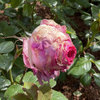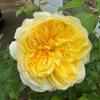New accepted for publication rose infecting virus publication
henry_kuska
10 years ago
Related Stories

INSPIRING GARDENSNative Plants Bring 10 Southern California Front-Yard Gardens to Life
Rare plants, rain gardens and wildlife habitats are just a few of the features showcased on the 2016 Theodore Payne Native Plant Garden Tour
Full Story
FUN HOUZZHouzz Pets: 50 Cats Cozy Up at Home
Design-Loving Felines Have the Run of the House
Full Story
GARDENING GUIDESNew Ways to Think About All That Mulch in the Garden
Before you go making a mountain out of a mulch hill, learn the facts about what your plants and soil really want
Full Story
BATHROOM DESIGNDream Spaces: 14 Fabulous Indoor-Outdoor Bathrooms
Disappearing walls put these baths in Mother Nature’s lap, counting tranquil views and fresh air as the best luxuries of all
Full Story
BATHROOM DESIGNShould You Install a Urinal at Home?
Wall-mounted pit stops are handy in more than just man caves — and they can look better than you might think
Full Story
HOME TECHThe Inevitable Future of Drones Around Your Home
As Google joins the push for airborne deliveries, it seems only a matter of time before neighborhoods are buzzing with drones. Is that OK?
Full Story
CONTAINER GARDENS3 Steps to Creating Quick, Easy and Colorful Succulent Containers
Take a bright container, add a colorful succulent or two and have a professional, summery design in minutes
Full Story
EARTH DAYGrow a Beautiful Garden With Ecofriendly Greywater
Reducing home water waste means lower bills and a healthier planet. Here's how to set up a greywater home irrigation system that can help
Full Story
ARTShow News: Rare Quilts Get Museum Time
See 6 intricate designs from a California exhibition and get tips for building your own quilt collection
Full Story
COMMUNITYGet a Bird's-Eye View of America's Housing Patterns
See the big picture of how suburban developments are changing the country's landscape, with aerial photos and ideas for the future
Full StoryMore Discussions









catsrose
henry_kuskaOriginal Author
Related Professionals
Arlington Landscape Contractors · Buford Landscape Contractors · Stamford Landscape Contractors · Costa Mesa Landscape Contractors · East Chicago Landscape Contractors · Huntley Landscape Contractors · La Vista Landscape Contractors · Lake Zurich Landscape Contractors · Lynwood Landscape Contractors · Mission Bend Landscape Contractors · Norristown Landscape Contractors · Rancho Santa Margarita Landscape Contractors · Shirley Landscape Contractors · South Lyon Landscape Contractors · Thonotosassa Landscape Contractorsanntn6b
henry_kuskaOriginal Author
henry_kuskaOriginal Author
henry_kuskaOriginal Author
henry_kuskaOriginal Author
henry_kuskaOriginal Author